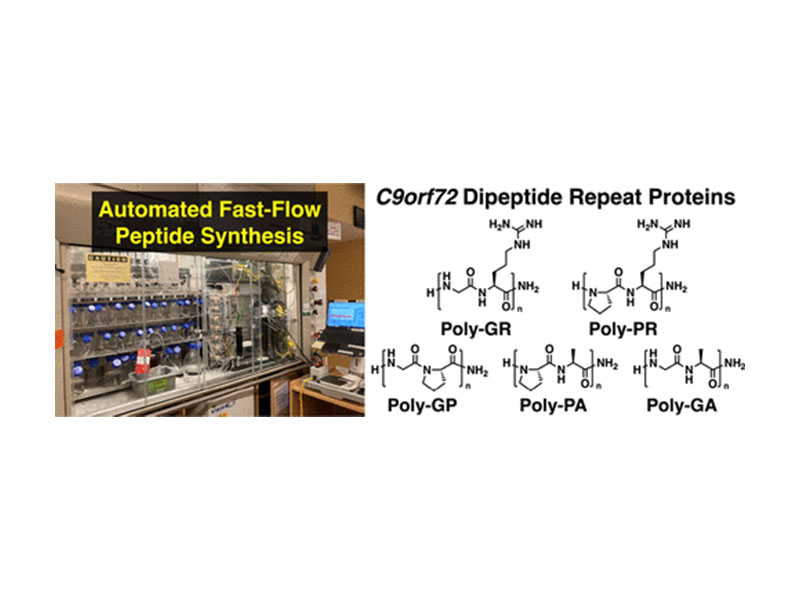
Automated Fast-Flow Synthesis of Chromosome 9 Open Reading Frame 72 Dipeptide Repeat Proteins

Automated Fast-Flow Synthesis of Chromosome 9 Open Reading Frame 72 Dipeptide Repeat Proteins
Kohei Sato, Charlotte E. Farquhar, Jacob Rodriguez, and Bradley L. Pentelute*
Abstract
An expansion of the hexanucleotide (GGGGCC) repeat sequence in chromosome 9 open frame 72 (c9orf72) is the most common genetic mutation in amyotrophic lateral sclerosis (ALS) and frontotemporal dementia (FTD). The mutation leads to the production of toxic dipeptide repeat proteins (DPRs) that induce neurodegeneration. However, the fundamental physicochemical properties of DPRs remain largely unknown due to their limited availability. Here, we synthesized the c9orf72 DPRs poly-glycine-arginine (poly-GR), poly-proline-arginine (poly-PR), poly-glycine-proline (poly-GP), poly-proline-alanine (poly-PA), and poly-glycine-alanine (poly-GA) using automated fast-flow peptide synthesis (AFPS) and achieved single-domain chemical synthesis of proteins with up to 200 amino acids. Circular dichroism spectroscopy of the synthetic DPRs revealed that proline-containing poly-PR, poly-GP, and poly-PA could adopt polyproline II-like helical secondary structures. In addition, structural analysis by size-exclusion chromatography indicated that longer poly-GP and poly-PA might aggregate. Furthermore, cell viability assays showed that human neuroblastoma cells cultured with poly-GR and poly-PR with longer repeat lengths resulted in reduced cell viability, while poly-GP and poly-PA did not, thereby reproducing the cytotoxic property of endogenous DPRs. This research demonstrates the potential of AFPS to synthesize low-complexity peptides and proteins necessary for studying their pathogenic mechanisms and constructing disease models.



